Off The Beaten Path Road Trip Through Coastal Provence
This one-week drive takes you from Toulon to Nice through some of the most scenic parts of southern France. It’s coastal, cultural, and calm, with enough variety to satisfy beach lovers, history fans, and slow-travel seekers alike.
Day 1: Toulon to Le Lavandou
Toulon
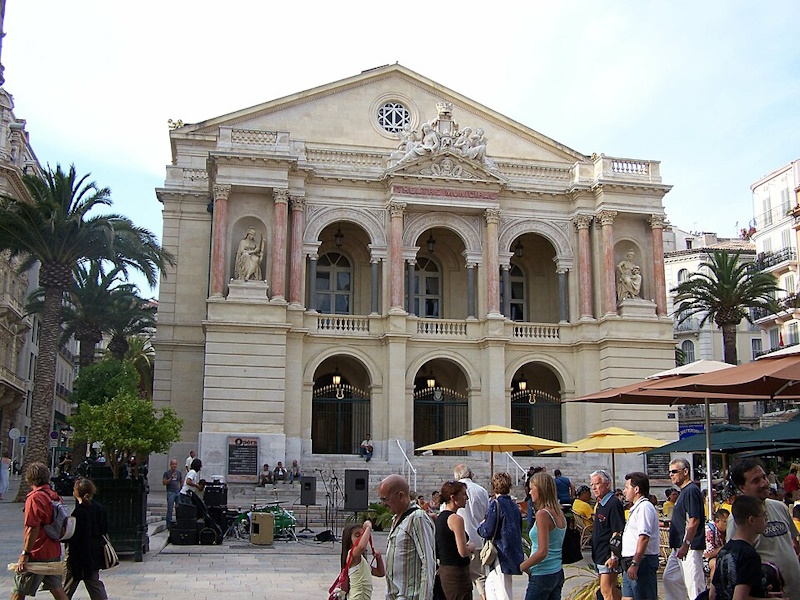
Start your trip in Toulon, a working port city with a rough edge but a solid core. Head straight to the Cours Lafayette market in the morning – a long, noisy strip of locals shouting prices under striped awnings. It sets the tone for a proper Provençal welcome.
If you want a view before you leave town, the cable car up Mont Faron is worth the short detour. From the top, you get wide views over the bay and harbor.
You can also visit the Mémorial du Débarquement en Provence which covers the Allied landings in Provence (August 1944).
Le Lavandou
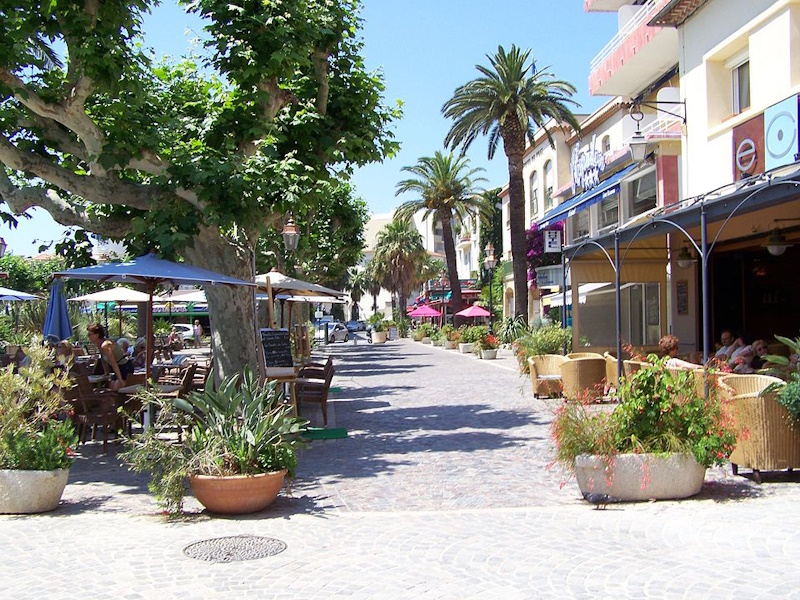
From Toulon, the coastal road winds past low cliffs and quiet inlets until you reach Le Lavandou. It’s a laid-back beach town with 12 stretches of sand, each with a slightly different feel.
The town itself is compact: one main street, a long promenade, and a marina. You’ll find plenty of places to grab dinner near the port.
If you’re planning to take the ferry to Port-Cros tomorrow, stop by the ticket booth on the quay to check departure times and weather conditions.
Day 2: Port-Cros (or Porquerolles) & Bormes-les-Mimosas
Port-Cros National Park
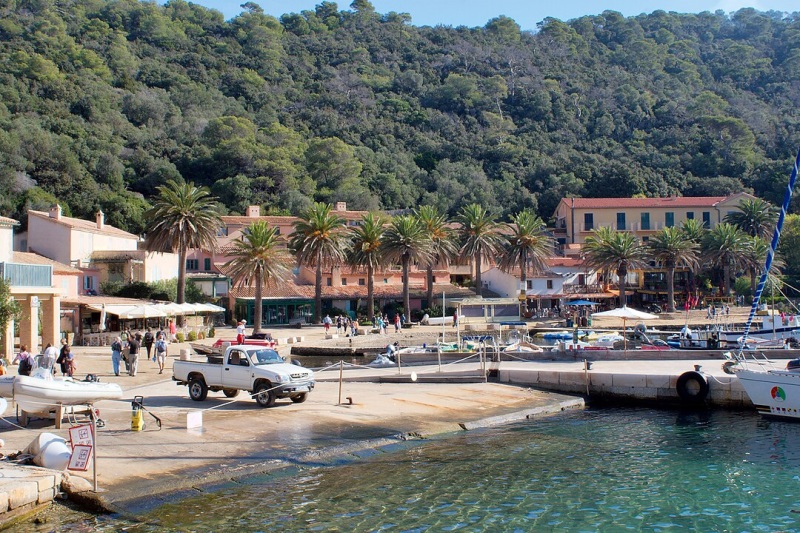
If the sea is calm, take the ferry to Port-Cros. This island is a national park with no cars, no buildings on the interior, just footpaths, quiet coves, and pine-covered hills. Bring water shoes and a picnic.
The snorkeling trail at La Palud Bay is marked by buoys with underwater info panels, and it’s one of the best shallow snorkel spots in France.
Porquerolles (alternative)
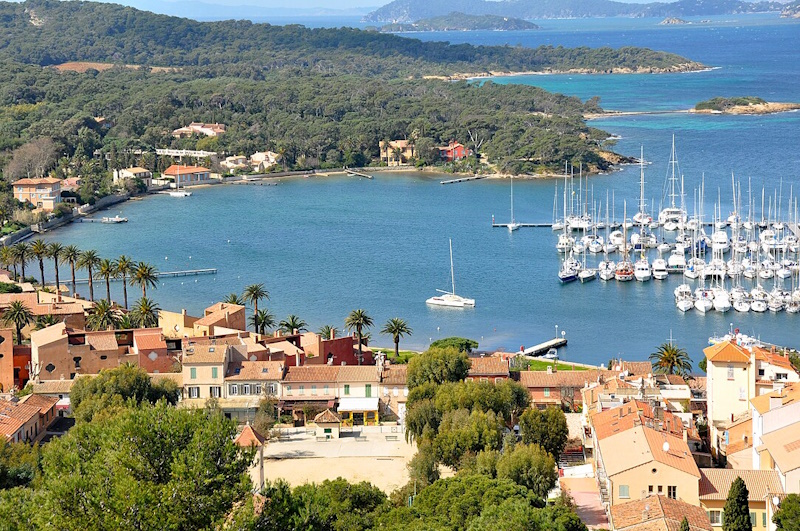
If the sea is calm, take the ferry to Porquerolles from Le Lavandou or nearby Hyères. This island is larger and more accessible than Port-Cros, with white-sand beaches, vineyards, and easy bike trails.
Rent a bike as soon as you arrive. The roads are car-free and flat, and most people pedal from the village to Plage Notre-Dame or Plage d’Argent.
You can pick up lunch from a bakery and picnic in the shade of eucalyptus trees near the water.
Bormes-les-Mimosas
In the late afternoon, head up the hill to Bormes-les-Mimosas. It’s only ten minutes away, but the change in atmosphere is total. Bougainvillea and mimosa tumble from stone walls.
The village is steep, with narrow stairs and tiny alleys that open to sea views. You can visit the remains of a medieval castle at the top, or just wander and take it all in.
Stay until dusk if you can as the light gets golden and the crowds thin out.
Day 3: Le Lavandou to Saint-Tropez (Scenic Coast)
Domaine du Rayol
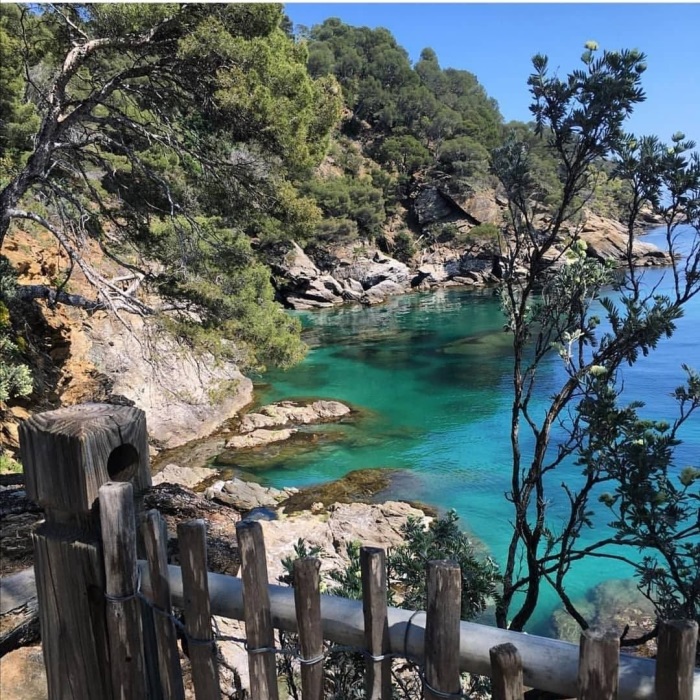
Leave Le Lavandou and take the slower coastal road east. Your first stop should be Domaine du Rayol, a botanical garden that hugs the shoreline just outside Rayol-Canadel.
It’s not your average garden: it’s designed to mimic different Mediterranean climates from around the world, with paths that lead down to hidden coves. You can easily spend an hour or two wandering.
Cavalaire-sur-Mer
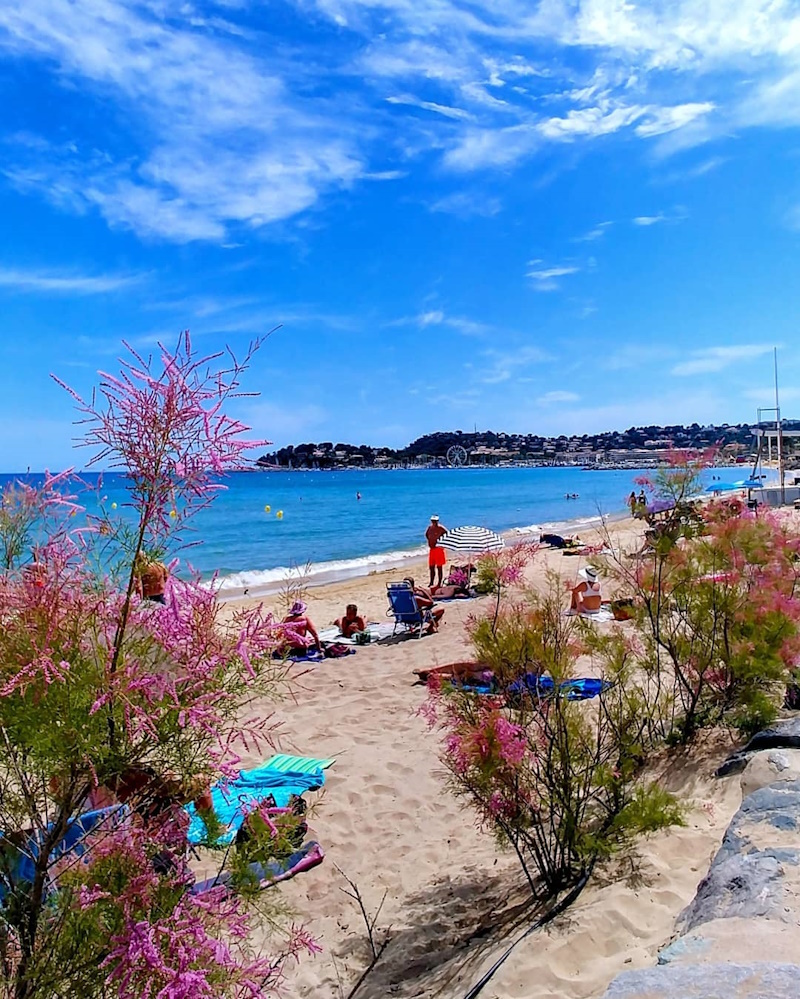
Next on your map is Cavalaire-sur-Mer, a classic mid-size seaside resort. It’s not fancy, but it’s good for a coffee or beach break if you’re traveling in summer. The beach is long and sandy, with easy access and no cliff hikes.
Gassin
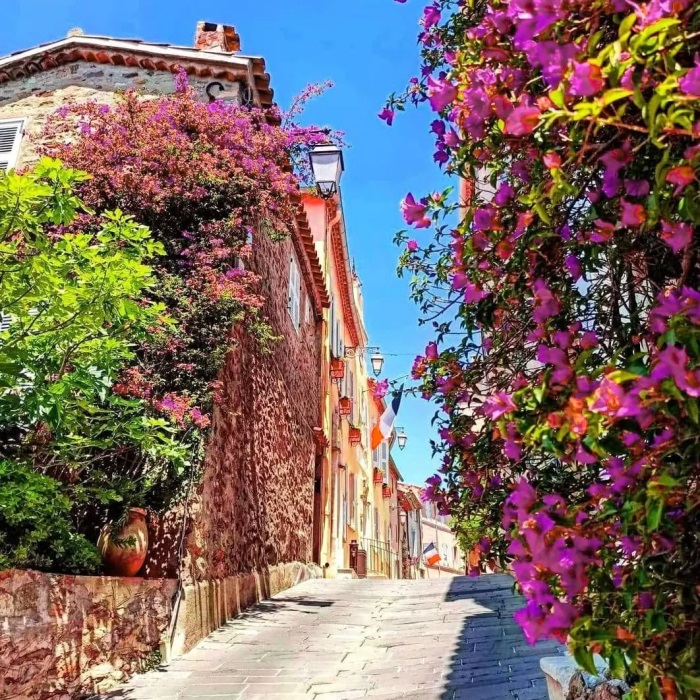
Before you reach Saint-Tropez, make a quick detour up to Gassin. This hilltop village is tiny – a few cobbled streets and a couple of panoramic terraces – but the view stretches across the Gulf of Saint-Tropez, and it’s a peaceful counterpoint to what’s coming next.
Saint-Tropez
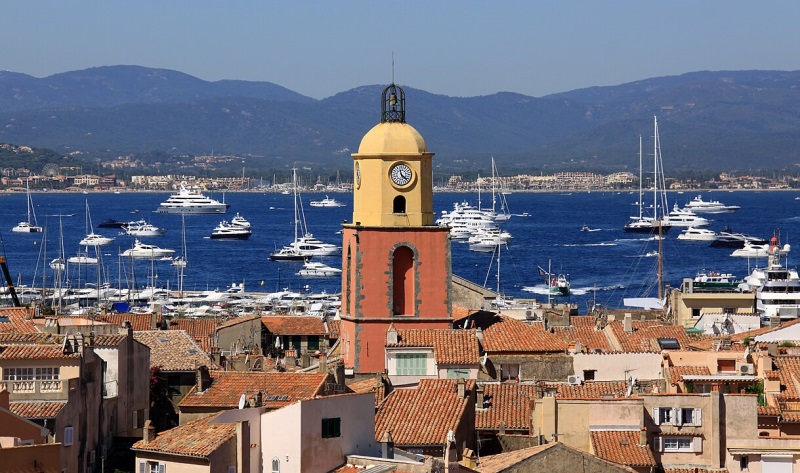
By mid-afternoon, roll into Saint-Tropez. Traffic can be rough in summer, so consider parking outside and walking in.
Skip the yacht-watching crowd and walk up to the Citadel instead. The fortress holds a maritime museum, but the real draw is the view.
Afterward, explore the La Ponche quarter, the old fishing neighborhood, where tiny lanes spill into shaded squares.
If you’re staying overnight, reserve dinner early as popular spots book fast.
Day 4: Ramatuelle, Pampelonne Beach, and Port Grimaud
Ramatuelle
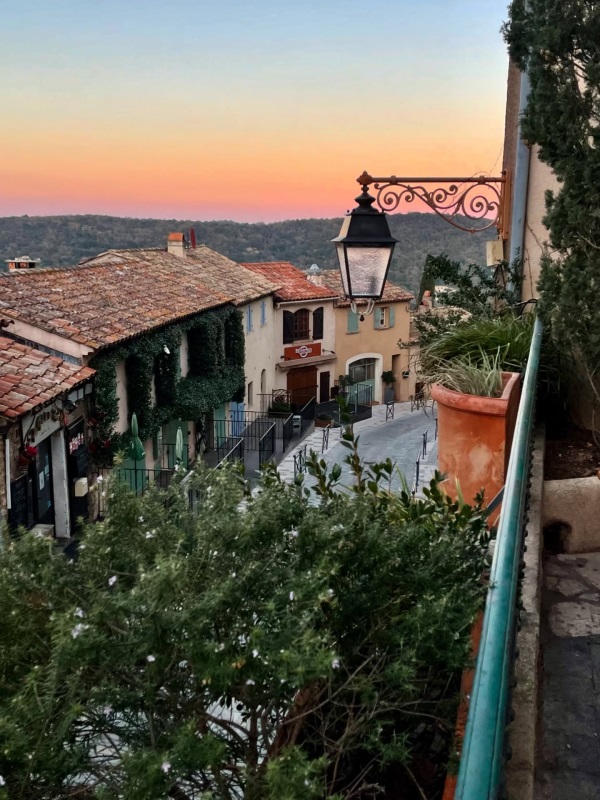
Start the morning inland in Ramatuelle. This fortified village clings to the hillside above the vineyards. It’s all curves, terracotta, and creeping vines, with occasional glimpses down to the sea.
There’s not much to “do,” but that’s the point. Walk slowly. Stop for a coffee. Maybe buy some soap or olive oil.
Pampelonne Beach
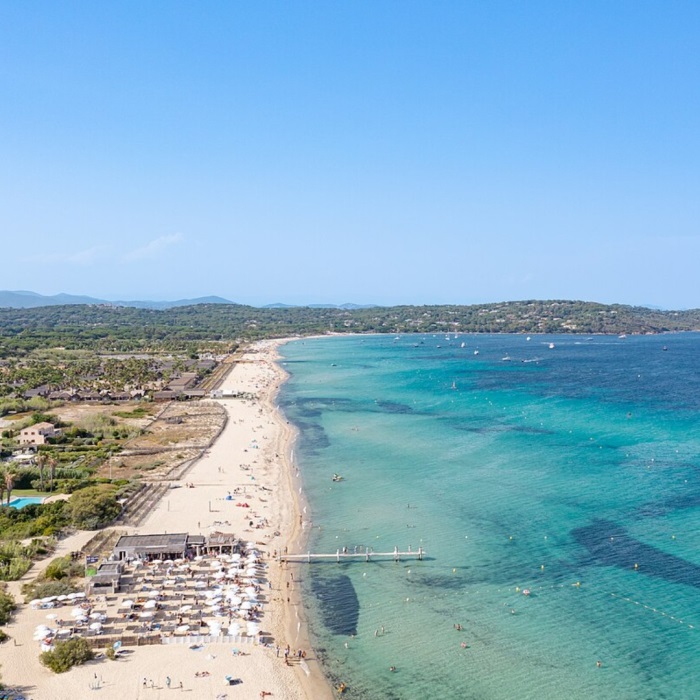
Just below Ramatuelle is Plage de Pampelonne, one of the most famous in France. It’s long, flat, and backed by dunes.
Some sections are private (with daybeds and restaurants), others are public and quieter. Go early to park easily.
If you want the classic beach club scene, try Le Club 55. Otherwise, bring your towel and walk until it gets quiet.
Port Grimaud
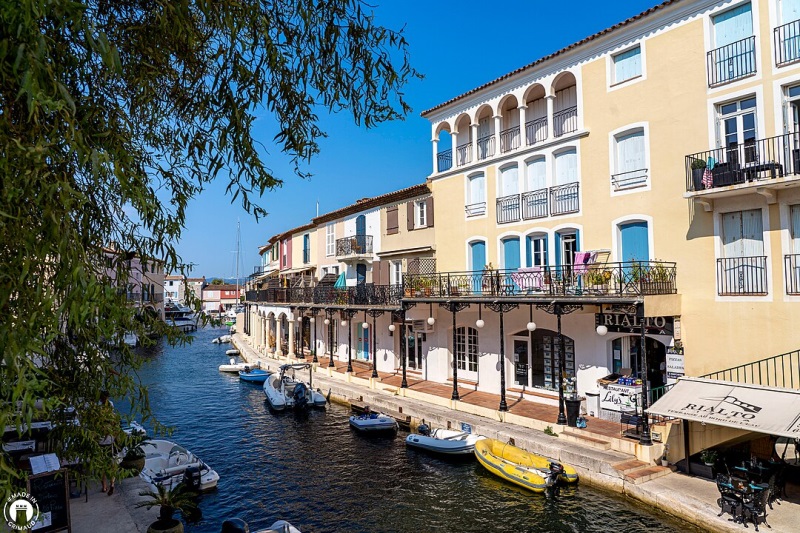
In the afternoon, head to Port Grimaud, often called the “Venice of Provence.” It’s a planned town from the 1960s with canals, little bridges, and pastel houses that all look similar but never quite the same.
You can rent an electric boat without a license and navigate the canals yourself, which is a fun break from all the driving.
Don’t expect authenticity, but it’s surprisingly pleasant.
Day 5: Saint-Tropez to Fréjus and Saint-Raphaël
Fréjus
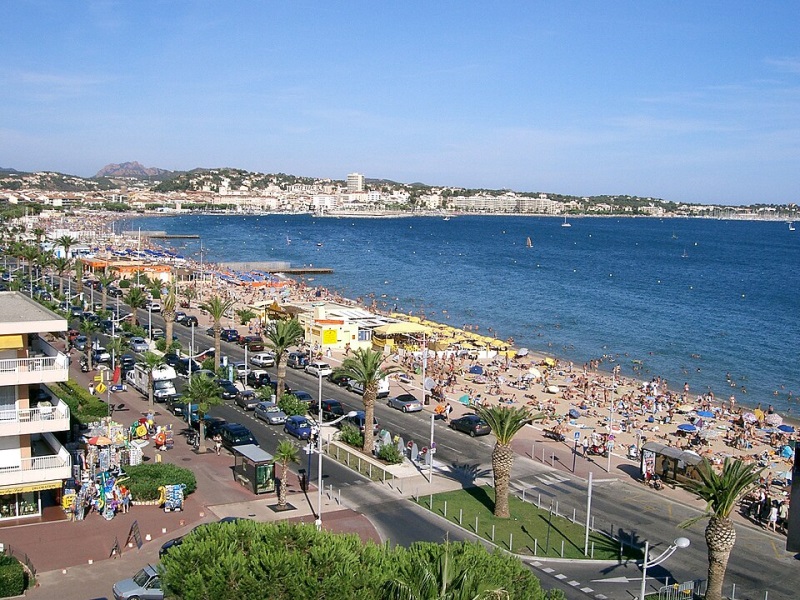
Drive north and rejoin the main coastal road toward Fréjus. This is one of the oldest towns on the route, founded by Julius Caesar.
You can still visit the Roman amphitheater, aqueduct remains, and a small archaeology museum. The town square is shaded and relaxed, with lots of places to grab lunch.
Saint-Raphaël
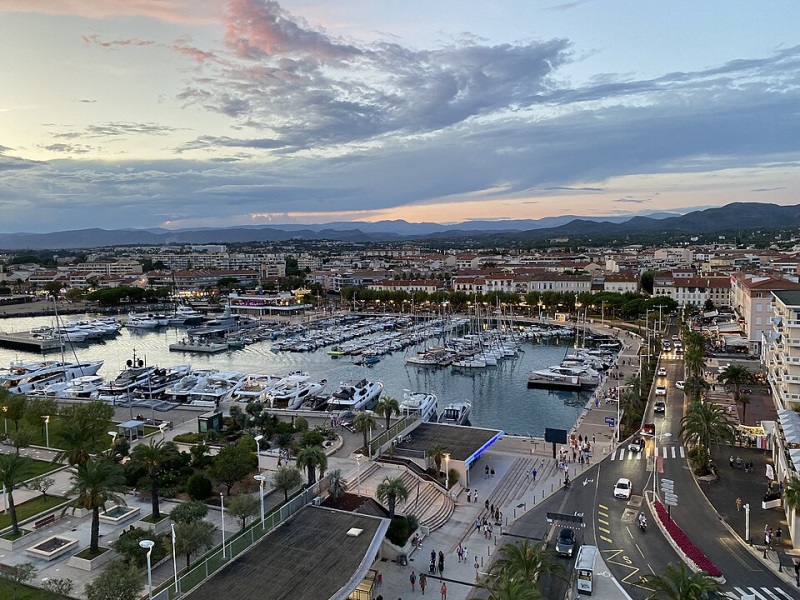
Just next door is Saint-Raphaël. The seafront is wide, open, and modern, but the old town is more compact and worth a short wander.
If you’re staying here overnight, the location is ideal, midway between Saint-Tropez and Cannes. The pace is calm.
Day 6: Massif de l’Esterel Drive to Cannes
Esterel Scenic Drive
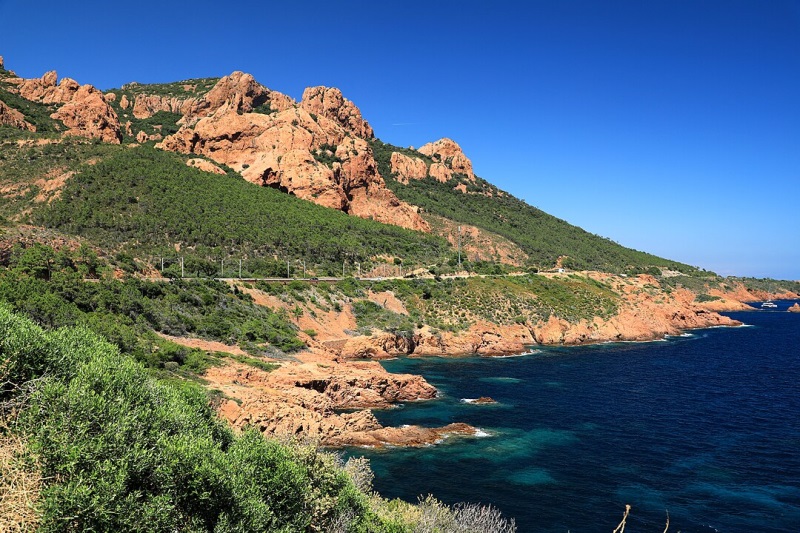
This is one of the most beautiful drives in France. Leave Saint-Raphaël and take the Corniche de l’Esterel, hugging the coast through red volcanic cliffs and wild Mediterranean brush.
There are pullouts where you can stop and take in the sea views. It’s narrow in places, so go early or late to avoid traffic.
Théoule-sur-Mer

Before you hit the sprawl of Cannes, pull into Théoule-sur-Mer. This quiet town has hidden beaches tucked between rocky cliffs and a small, uncrowded feel.
It’s a great place for a swim or a long lunch before you re-enter urban territory.
Cannes
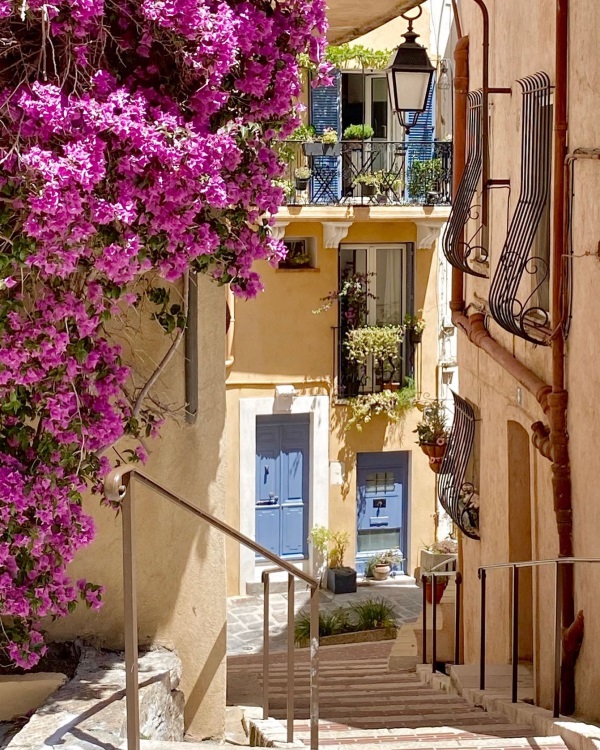
Arrive in Cannes by late afternoon. It’s flashy, yes, but the old quarter, Le Suquet, is often overlooked. Climb up for views of the bay and walk the narrow lanes down to the port.
If you have time, take a ferry to the Îles de Lérins, just fifteen minutes offshore. Most visitors head to Île Sainte-Marguerite, where the Fort Royal once held the Man in the Iron Mask. You can visit the cell and walk the pine-covered trails across the island.
If you prefer something quieter, cross to Île Saint-Honorat, where Cistercian monks still live and produce wine. There’s a peaceful monastery, ruins of a sea fortress, and shaded coastal paths with almost no crowds.
Day 7: Cannes to Antibes and Nice
Antibes
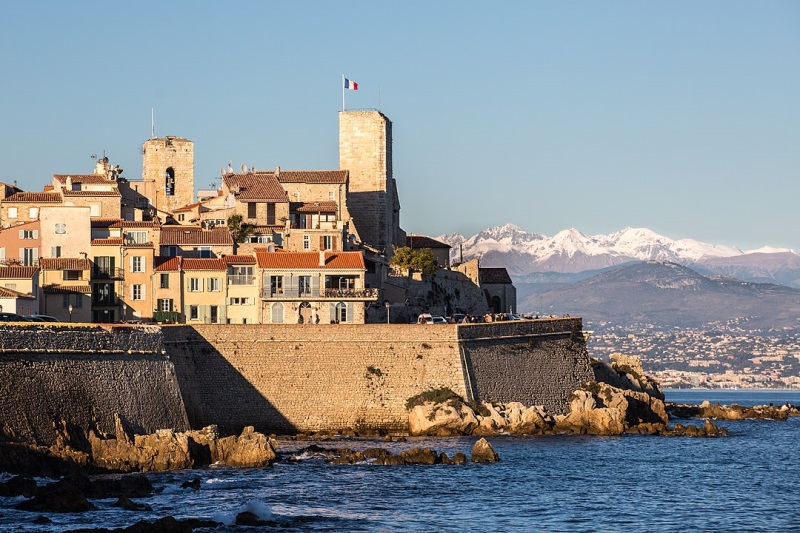
Start the day with a short drive to Antibes. Park outside the old town and head in on foot.
Visit the Marché Provençal if it’s open, then walk the sea wall. The Picasso Museum is inside the old Château Grimaldi, and even non-museum lovers will enjoy it – it’s small, focused, and full of light.
Nice
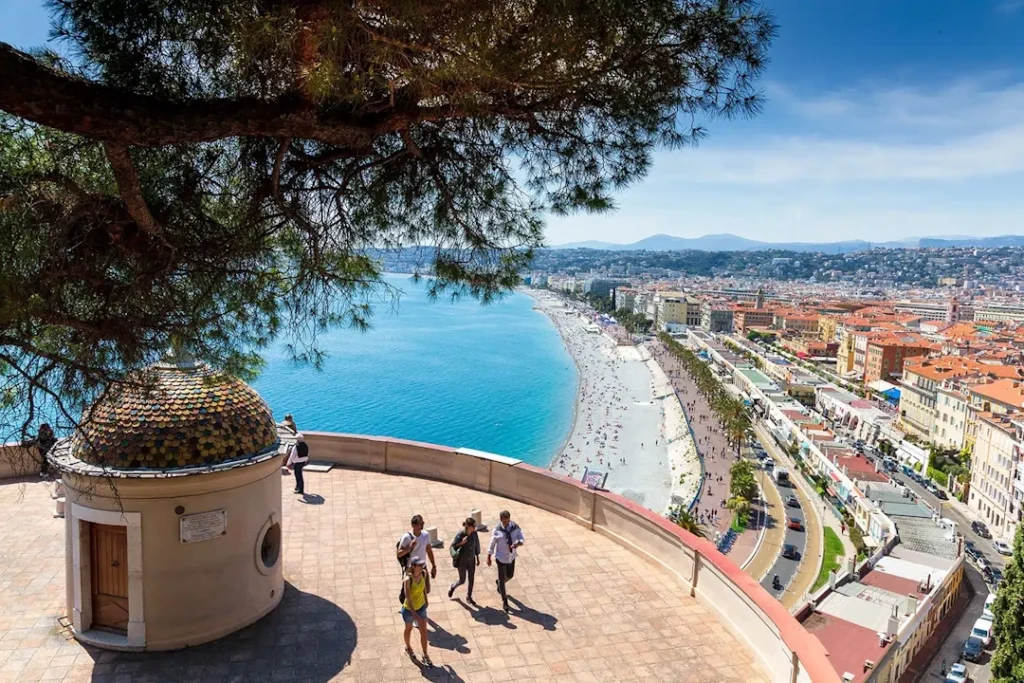
Arrive in Nice by early afternoon. If you’re dropping off your rental car, do it now and continue on foot.
Walk the Promenade des Anglais, explore the old town’s tight streets and ochre facades, and don’t miss the climb (or elevator) up Colline du Château. There’s no castle left, but the views over the rooftops and bay are unbeatable – the best panorama in the city.
Finish your trip with socca and rosé at a café in Cours Saleya. The light here is different, softer, more reflective. It’s a good place to end.
